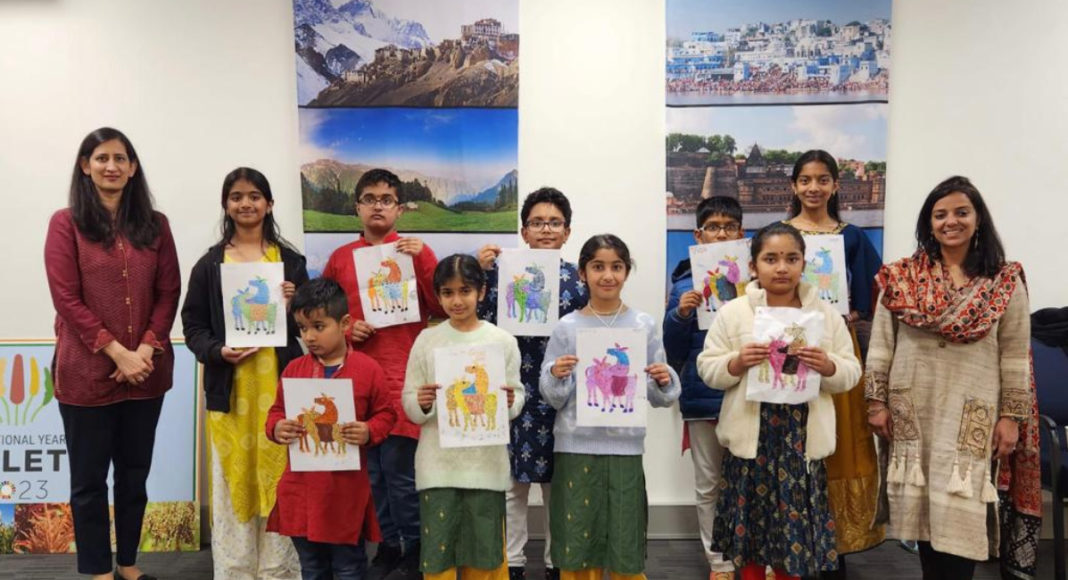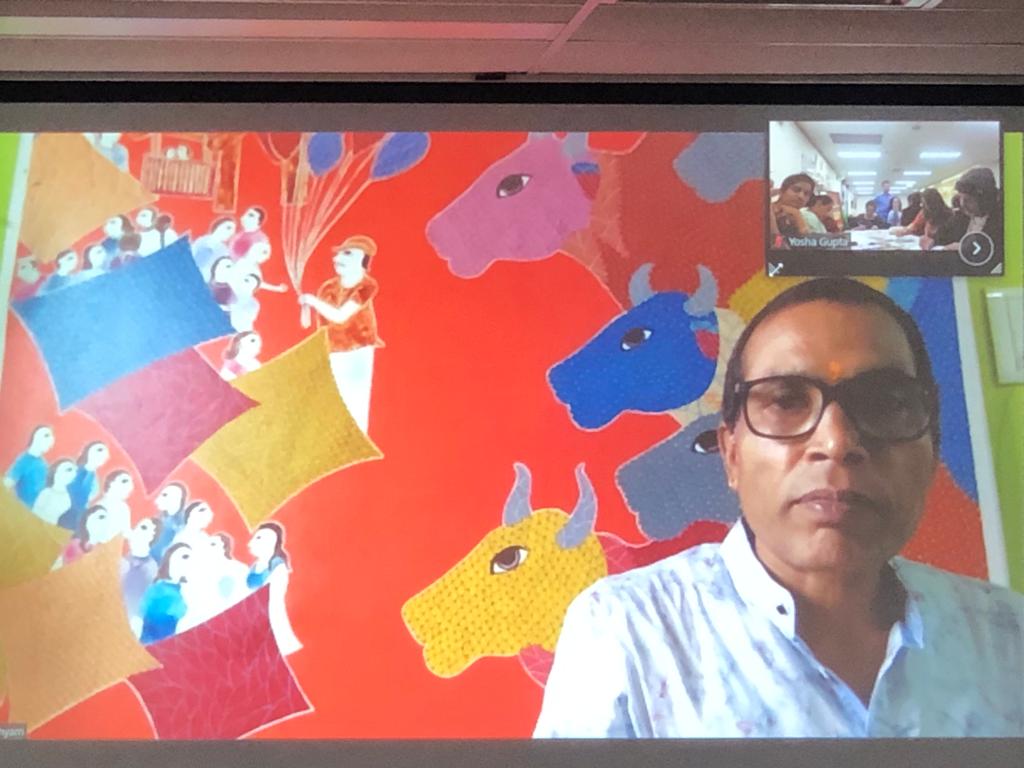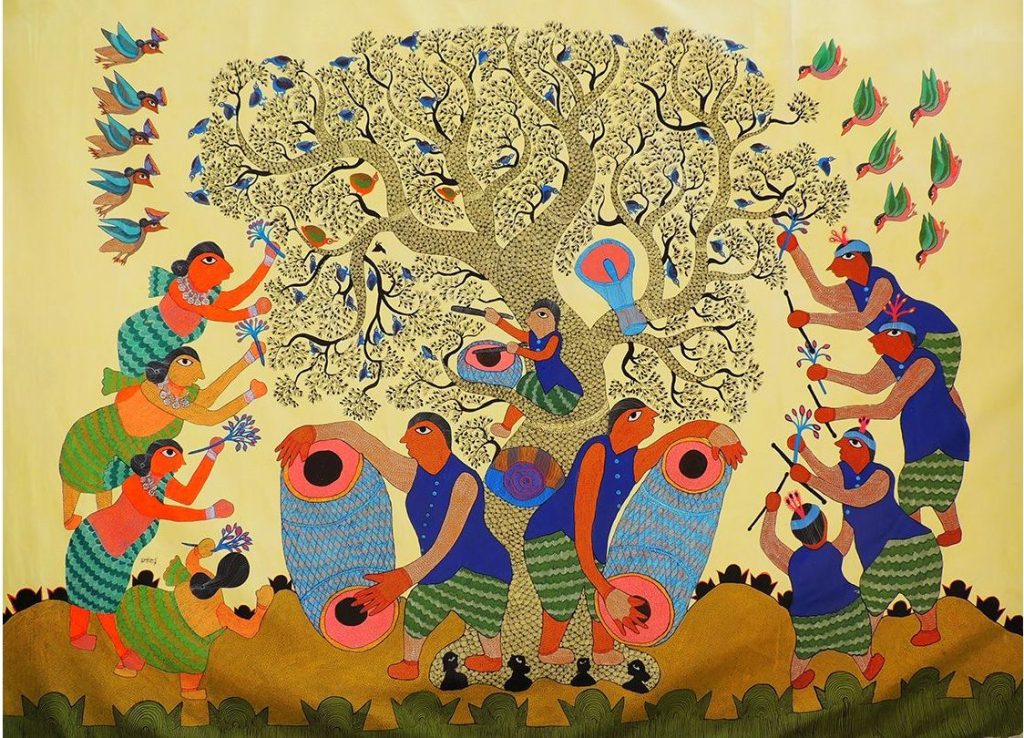A Creative Confluence Down Under
The Swami Vivekananda Cultural Centre (SVCC) at the Consulate General of India in Sydney recently orchestrated a captivating workshop on Gond art, collaborating with MeMeraki and acclaimed master artist Venkat Shyam from Bhopal, Madhya Pradesh. This artistic endeavor served as an innovative bridge between cultures and nations, spotlighting the intriguing connections between India’s Gond art and Australia’s First Nations art.
SVCC’s Role in Cultural Diplomacy
As an integral part of the Indian Council for Cultural Relations, the Swami Vivekananda Cultural Centre (SVCC) operates to nurture cultural bonds between India and Australia. The recent workshop exemplified SVCC’s commitment to fostering cross-cultural exchanges and promoting art as a universal language.

MeMeraki’s Culturetech Platform
Yosha Gupta, the visionary founder and CEO of MeMeraki, introduced the world’s first culturetech platform aimed at globalizing the work of master artists from India. This pioneering initiative strives to make the remarkable creations of Indian artists accessible to a worldwide audience, showcasing their talent and cultural heritage on a global stage.
Unveiling the Magic of Gond Art
Master artist Venkat Shyam, hailing from the lineage of the late Jangarh Singh Shyam, a trailblasing contemporary Pardhan Gond artist, graced the online workshop with his expertise. Attendees, including children and students from the Sydney Sanskrit School, were introduced to the fundamentals of Gond paintings, immersing themselves in the intricacies of this ancient art form.

The Fascination of Gond Art
Gond art, a captivating and distinctive artistic expression originating from the Gond tribe of Central India, is deeply intertwined with their cultural beliefs and reverence for nature. Symbolizing the interconnectedness of all living beings, Gond art features intricate and vibrant motifs inspired by flora, fauna, and mythical creatures. The artists employ natural materials such as cow dung, charcoal, and plant sap, further connecting their work with the environment.
Patterns, Symmetry, and Symbolism
The hallmark of Gond art lies in its meticulous use of small dots, lines, and symbols, which coalesce into elaborate and symmetrical designs. These patterns epitomize the harmony and equilibrium found in nature. Each dot, dash, or line holds profound meaning, with the bindu (dot) symbolizing ‘Shakti’ or divine feminine power, reflecting the spiritual essence of the art form.
Diverse Themes and Contemporary Expressions
Gond art boasts a rich tapestry of themes, ranging from depictions of local deities like Baba Dev and Jalharin Mata, to the representation of spiritual trees such as Saja and Mahua. Folklore and creation legends like Naga Baig and Naga Baigin are celebrated, alongside vivid portrayals of animals such as tigers and deer. In a modern twist, contemporary Gond artists are seamlessly incorporating urban life and popular culture into their masterpieces.
Enriching Cultural Perspectives
Mala Mehta OAM, President and Honorary Founder of the Indo-Aust Bal Bharathi Vidyalaya (IABBV) Hindi School in Sydney, also joined the workshop, sharing her heartfelt sentiments. To her, tribal art is a cherished treasure, with every stroke capturing a unique narrative that spans cultures and generations.
The intersection of Gond art, technology, and cultural diplomacy showcased at the Swami Vivekananda Cultural Centre’s workshop demonstrates the power of art to transcend boundaries and unite diverse communities in a shared appreciation for creativity, tradition, and human connection.

Contributor





